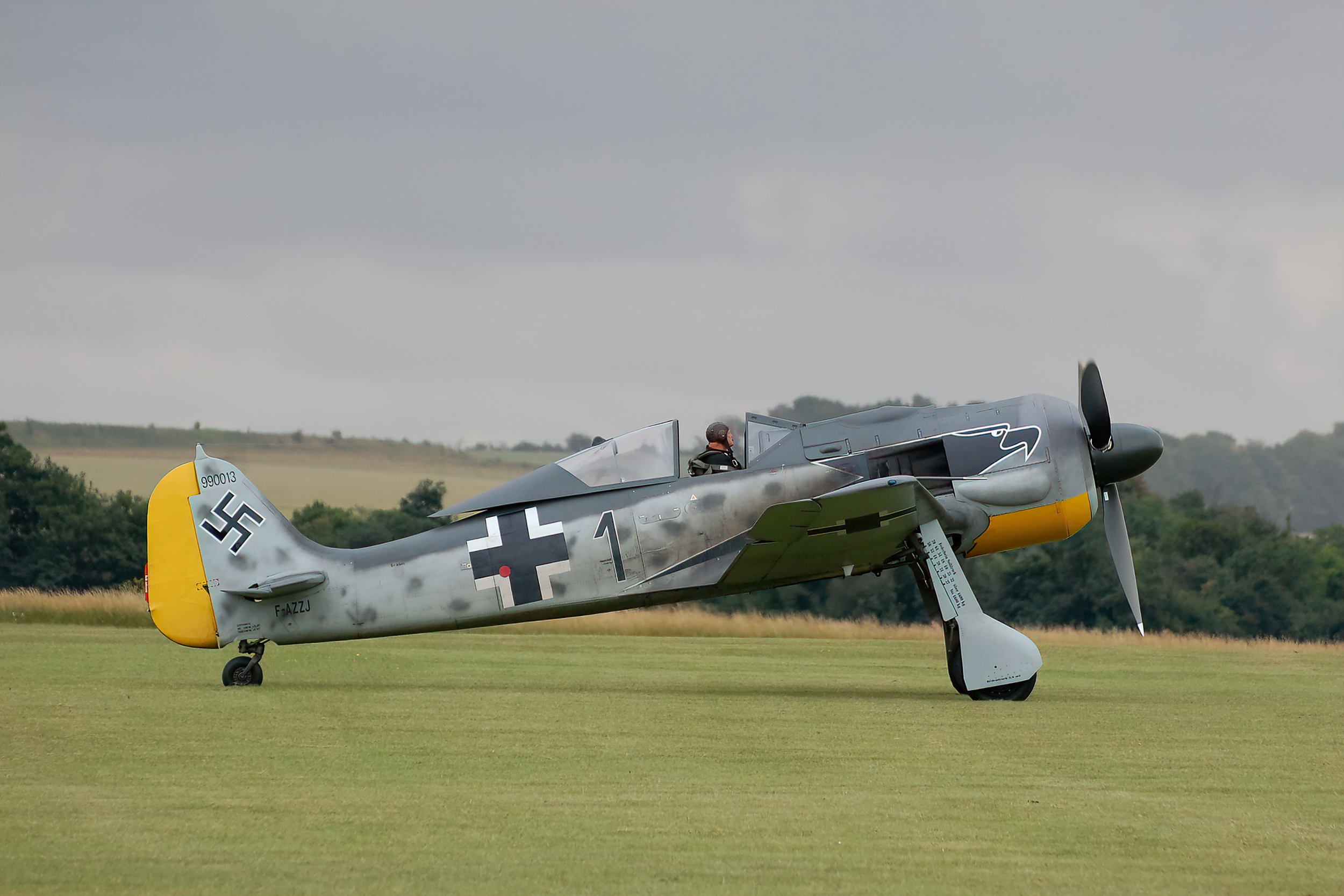
June 1 / Focke-Wulf Fw 190 first flight
First Flight 1 June 1939
Focke-Wulf Fw 190
The Focke-Wulf Fw 190 stands as one of the most iconic and formidable fighter aircraft of World War II, renowned for its exceptional performance, innovative design, and combat effectiveness. Its rich history, spanning from its development to its operational legacy, showcases its impact on aerial warfare and its enduring reputation as a legendary aircraft.
Origins and Development (1938-1939):
The origins of the Focke-Wulf Fw 190 can be traced back to the late 1930s when the German Luftwaffe sought a new high-performance fighter to complement and eventually replace the Messerschmitt Bf 109. Designer Kurt Tank led the development efforts at Focke-Wulf Flugzeugbau, aiming to create a versatile and potent fighter aircraft.
The first prototype of the Fw 190, designated Fw 190 V1, took its maiden flight on June 1, 1939, showcasing its advanced design features, including a powerful BMW radial engine, innovative cooling system, and streamlined aerodynamics that set it apart from contemporary fighter aircraft.
Operational Debut and Combat Success (1941-1945):
The Focke-Wulf Fw 190 entered operational service in 1941, making its combat debut on the Eastern Front against Soviet forces. Its superior speed, agility, firepower, and robust construction quickly earned it a reputation as a formidable adversary in aerial combat.
The Fw 190’s exceptional performance and versatility allowed it to excel in various roles, including air superiority, ground attack, bomber escort, and reconnaissance missions. It proved to be a highly effective fighter against Allied aircraft, showcasing its combat prowess in engagements across multiple theatres of World War II.
Variants and Evolution:
Throughout its operational lifespan, the Focke-Wulf Fw 190 underwent numerous variant upgrades and modifications to enhance its combat capabilities and address changing battlefield requirements. Variants such as the Fw 190A, Fw 190D, and Fw 190F introduced improvements in engine power, armament, armour protection, and operational range.
The Fw 190’s adaptability led to the development of specialized variants for specific roles, such as night fighters, fighter-bombers, and high-altitude interceptors, showcasing its versatility and effectiveness in meeting diverse operational demands.
Global Reach and Post-World War II Service:
Following World War II, the Focke-Wulf Fw 190 saw service with various air forces around the world, including France, Turkey, and Czechoslovakia. Its combat-proven reputation and enduring design features made it a sought-after aircraft for post-war military operations and training purposes.
Legacy and Historical Significance:
The Focke-Wulf Fw 190’s legacy endures as a symbol of German engineering excellence and innovation in fighter aircraft design. Its impact on aerial warfare, combat effectiveness, and technological advancements during World War II solidified its place as a legendary aircraft in aviation history.
In conclusion, the Focke-Wulf Fw 190’s comprehensive history exemplifies its evolution from a cutting-edge fighter concept to a revered and feared aircraft that left an indelible mark on the annals of aviation. Its performance, design ingenuity, and combat legacy cement its status as a true icon of World War II aviation.
Fw 190 Facts
Innovative Design: The Focke-Wulf Fw 190 was known for its innovative design features, including a streamlined fuselage, wide-track landing gear, and a powerful BMW radial engine, which contributed to its exceptional performance and agility in combat.
Speed and Maneuverability: The Fw 190 was celebrated for its impressive speed and manoeuvrability, making it a formidable adversary in dogfights and air-to-air combat engagements during World War II.
Versatile Role: The Fw 190 excelled in various roles, including air superiority, ground attack, bomber escort, and reconnaissance missions, showcasing its versatility and adaptability on the battlefield.
Combat Effectiveness: The Fw 190 earned a reputation as a highly effective fighter aircraft, credited with downing numerous Allied aircraft and achieving success in engagements across multiple theaters of World War II.
Armament: The Fw 190 was equipped with a potent armament package, typically including machine guns, cannons, and bombs, providing it with formidable firepower to engage enemy aircraft and ground targets effectively.
Operational Range: The Fw 190 had a respectable operational range, allowing it to conduct missions deep behind enemy lines and provide crucial air support to ground forces in various theatres of the war.
Variants and Upgrades: The Fw 190 underwent several variant upgrades and modifications throughout its service life, with advancements in engine performance, armament configurations, and specialized variants tailored for specific combat roles.
Pilots’ Favorite: Many Luftwaffe pilots regarded the Fw 190 as a favourite aircraft due to its robust construction, excellent handling characteristics, and overall combat effectiveness, earning it praise for its reliability and performance in combat.
Night Fighter Role: Some Fw 190 variants were modified for night fighter operations, equipped with radar and specialized armament to intercept and engage Allied bombers under the cover of darkness, showcasing its adaptability to evolving combat scenarios.
Post-War Service: Following World War II, the Fw 190 saw service with various air forces around the world, including France, Turkey, and Czechoslovakia, highlighting its enduring legacy and continued relevance in post-war military operations and training programs.

